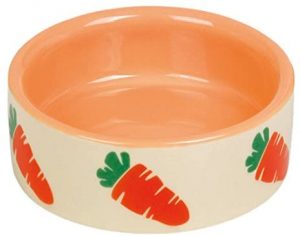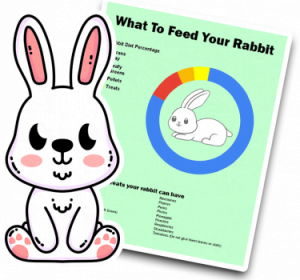

If you’re here, you’re probably looking at getting an Angora Rabbit. These are one of the fluffiest rabbits out there, they’re known for their excessive fur, characteristic ears and a common alternative to many wool producers.
Angora Rabbits are one of the oldest domesticated rabbit breeds and was commonly bred for its long fur, also known as Angora Wool.
Underneath their long fur, you’ll find they’re really not that different to most rabbits, having a shorter undercoat.
This means, if you’re looking for hypoallergenic bunnies, these are no the ones to go for!
According to the ARBA, there are a total of 11 specific breeds of Angora Rabbit, these are the following:
French Angora, German Angora, English Angora, Chinese Angora, Finnish Angora, Japanese Angora, Korean Angora, Russian Angora, St Lucian Angora, Swiss Angora, Giant Angora and Satin Angora.
Despite how fluffy they are, they are still very friendly and eager to be social, you’ll often see them doing binkies and running around constantly,
You can follow these few steps to make sure they settle in and become part of the family quickly:
| Angora Rabbit Quick Guide | |
|---|---|
| Name of Breed | Angora |
| Sub Breeds | French Angora, German Angora, English Angora, Chinese Angora, Finnish Angora, Japanese Angora, Korean Angora, Russian Angora, St Lucian Angora, Swiss Angora, Giant Angora and Satin Angora |
| Purpose of breeding | Angora Fur |
| Size of Rabbit | Medium – Large |
| Average Weights | 2-5kg |
| Beginner Rabbit Pet? | No |
| Climate Tolerance | Any |
| Origin Location | Turkey, Ankara |
The Angora breed originated from Turkey, Ankara. Ankara is known as the cosmopolitan capital of Turkey, which makes sense given the absolute beauty of the Angora Rabbit Breeds.
Angora Rabbits are known across the world for their long and extremely soft manes, as such, they were extremely popular within French Royalty during the 18th Century.
Before you worry, no, Angora Rabbits are not killed for their fur. Luckily, as they regrow their excessively long and soft fur they are kept alive and simply plucked, combed and sheared.
This depends on the specific ‘sub’ breed of the Angora Rabbit, however, without regular care their fur will continually grow. As such, there’s no specific length we can give other than “Very Long”.
An Angora rabbits fur can be quite profitable and a great source of income for treats, food and toys!
The common colors of an Angora Rabbit are: White, Blue, Gray, Lilac White, Cinnamon White, Marble White.
There’s no specific collection of coat colors for the Angora Breeds but they are more commonly white as a majority.
An Angora rabbit will need grooming a lot more regularly than a normal domestic rabbit. This is due to their excessive hair growth and constant shedding.
Due to their long fur, you’ll find that they will need de-knotting a lot. There are some really good kits for grooming your rabbit but we highly recommend the Ruff ‘n Ruffus or the Rosewood brand grooming kit.
Due to the excessive fur that an Angora rabbit has, you’ll want to be making sure they clean themselves thoroughly. You shouldn’t be cleaning them yourself unless you really have to.
NEVER put a rabbit in a bath or shower, this can send them into shock and can result in death.
If your rabbit is having trouble washing themselves, take them to a veterinary to make sure they are well, if they require assistance (Arthritis or rescue bunny) you can wash them in a very shallow pool of water.
If you can, definitely try and clean your bunny with a water cloth rather than a bath. If there’s a worst-case scenario, Tiffany’s Bunny Gang has a fantastic video on cleaning your rabbit:
Angora Rabbits due to their extremely long coats of fur, are prone to being matted. This unfortunately means they’re prone to getting skin infections.
With how often their skin becomes matted and dirty/soiled, they’re also at higher risk of developing flystrike.
Due to their excessively long fur, if they are not groomed sufficiently and often, they will be grown to GI Stasis, this is because of a build up of fur in their gut that they cannot remove themselves.
Much like all rabbit breeds, Angora Rabbits will have dental issues if they’re not fed a proper diet and have toys to grind their teeth down on.
If your rabbit has a growth spurt and there is no natural teeth grinding, you will find that their teeth will protrude into their gums and this will lead to a lack of appetite.
Angora Rabbits have a very gentle temperament, they love to play with other rabbits and their owners. They work particularly well with bonded partners and can make great comfort buddies.
Like most rabbit breeds they do dislike being handled and picked up. This doesn’t necessarily make Angora Rabbits aggressive, simply defensive and frightened when handled.
Due to how fragile they are, you should handle them with care.
If can take a rabbit anywhere from a few months to a year to become fully comfortable with yourself. Because of this, we highly suggest taking some time to let your rabbit get to know you every day.
An Angora Rabbits life span depends on its lifestyle, typically they will live between 7 – 12 years under the basis they don’t fall ill.
This depends on the level of activity your Angora has in your household or garden as well as other factors like their breed and sex. This table of information will breakdown the average of each:
| Breed | Buck (Male) | Doe (Female) |
|---|---|---|
| English | 2.0 – 3.5kg (4.4 – 7.7lbs) | 2.0 – 3.5kg (4.4 – 7.7lbs) |
| French | 3.5 – 4.5kg (7.7 – 9.9lbs) | 3.5 – 4.5kg (7.7 – 9.9lbs) |
| Giant | 5.5kg + (12.12 lbs+) | 5.5kg+ (12.12 lbs+) |
| Satin | 3.0 – 4.5kg (6.6 – 9.9lbs) | 3.0 – 4.5kg (6.6 – 9.9 lbs) |
Most female breeds with weigh more and be slightly larger due to their dewlap.
In most cases you’ll want your rabbit to live either indoors or outdoors and not a combination of both, this may not be possible for everyone though. As such, you’ll need the best possible living conditions for both indoors and outdoors.
Your rabbit is going to need as much space as you can provide for exercising, playing, resting and cuddling.
We suggest an absolute minimum for any rabbit cage to be 20-30 inches across your X,Y and Z.
We advise not using a wire bottom cages, as this can be detrimental to your rabbit’s health due to many complications such as Sore Hocks, Fractures and Infections.
If you do have a wire cage, one common solution is to simply put a wood base down so your rabbit isn’t constantly on the wiring.
If possible, we suggest keeping your rabbit out of direct sunlight however, we do like to give rabbits some sunlight to bathe in at certain times of the day. So definitely do take into consideration the sun position.
If you can pick a cage which as big as possible. If possible, extend it further with a rabbit run which gives your rabbit more room to move around and get comfy when they’re put away.
You should let your rabbit out for at the very least 3-4 hours a day, this doesn’t include playtime as that should be the bulk of your rabbit’s exercise.
Rabbits have their own preference, but for safety reasons we do suggest using a bowl for varying reasons.

During the winter, you will find that bottles often freeze making it difficult for rabbits to drink and in turn leading to dehydration.
Whilst you may need to change your rabbits bowl more often, it’s a much safer and better solution for your rabbits safety.
Your Angoras diet will be no different to most Rabbit diets, in such a case you would need to have a breakdown of the following:
| Fresh premium dust-extracted hay | 70% |
| Fruits & vegetables | 25% |
| Alfalfa Pellets | 5% |
If you can, try mixing varying types of hay together to create a hybrid of Meadow Hay, Orchard Grass & Timothy Hay. This will give your rabbit a balance of nutritional in-take.
Some rabbits refuse to eat certain types of hay, before trying to mix them, definitely try them on their own for a bit.
If you’re using a brush just for grooming and not for the removal of hair fibres, we recommend the one in the grooming kit from Ruff ‘n Ruffus or the Rosewood brand.
Both of these brands are fantastic for any rabbit owner but particularly great for anyone with an Angora Breed.
As long as you’re a healthy balanced diet, there is no ‘best’ food as such, you would want to make sure they use a perfect split of food types; Pellets, hay and vegetables.

By entering your email address you agree to receive emails from Cottontailclub. We'll respect your privacy and you can unsubscribe at any time.